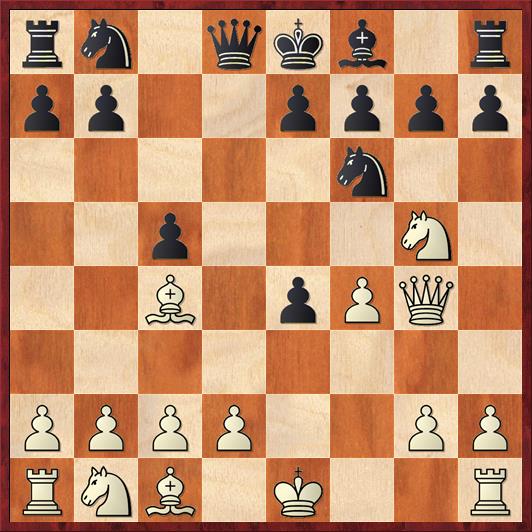Things are calming down on the book front, and I am going to move gradually back to chess in this blog.
As many readers know, I used to record lectures regularly for a website called ChessLecture. I decided to stop a few years ago. Not coincidentally, it was right around the time that I started working hard on The Book of Why. I simply couldn’t afford the time any more to prepare ChessLectures.
All of the 160 lectures I recorded are still available, of course, and I continue to recommend ChessLecture as the perfect website for people who learn by hearing and seeing rather than by reading. Which brings me to my announcement. In honor of the launch of The Book of Why and its auspicious debut at #2 among hardback science and math books at Amazon, ChessLecture is offering free of charge, for this week only, the first lecture I ever recorded.
They actually offer a different free lecture every week. But to preserve the high quality of the site, they work on a subscription-based model. So if you like my sample lecture, I hope you’ll consider subscribing so that you can listen to my other 159 lectures as well as the other 3337 videos available at this amazing site!
The sample lecture is called “Nuke the Sicilian! How to Sac Your Queen on Move Six and Win.” And if it isn’t too self-serving to say so, I think it is a classic: my victory over IM David Pruess in 2006, the first over-the-board tournament appearance of the Bryntse Gambit 1. e4 c5 2. f4 d5 3. Nf3!? ef 4. Ng5 Nf6 5. Bc4! Bg4?! 6. Qxg4! Before this game, the Bryntse Gambit had been played a few times in correspondence chess by (of course) Arne Bryntse, a Swedish correspondence chess player.
Yup, I’m hanging a queen. On move six.
I rediscovered this bold and romantic queen sacrifice by myself around 2004 (in fact, at the time this lecture was recorded I’m not even sure I was aware that Bryntse had discovered it first). Over the next two years I played it many times against my computer and eventually worked it out to a complete system, while waiting for my chance to spring it against a human opponent. Pruess was the unsuspecting victim, but I’ve always thought he deserves a lot of credit. Black can give back the gambit pawn and escape immediate danger with 5. … e6. However, Pruess just didn’t believe my queen sacrifice could be sound, and so on principle he played 5. … Bg4, attacking my queen, and the rest is history.
I hope you enjoy the lecture, and I thank Hal Bogner, the man behind the curtain who makes ChessLecture work. It was his idea to celebrate the publication of my book in this fashion.
P.S. My next victim in this opening was Grandmaster Sergey Kudrin, eight years later. He should have watched my ChessLecture! He was a little bit luckier than Pruess — I accepted his draw offer in a probably winning endgame.




{ 3 comments… read them below or add one }
Thanks for the plug, Dana. I’m looking forward to reading the book, and so are quite a few of my friends – one of whom studied under Judea Pearl at UCLA.
I’d like to add that ChessLecture.com is offering a special introductory rate of $15 for 3 months of unlimited streaming of not only your 160 videos, but all 3,300+ videos, through the end of May. Here’s a link to the offer:
http://chesslecture.mybigcommerce.com/3-months-silver-membership-on-chesslecture-com/
I would very much doubt that the first occurence of the OTB Bryntse gambit was as late as 2006; at least, the Caro-Kann version of the gambit was tested over the board much earlier than that. Even I _almost_ got to play against it (Kenneth Karlsson – bosjo, Linköping 1982), but after 1.e4 c6 2.f4 d5 3.Nf3 dxe4 4.Ng5 I played the cautious/stupid move 4…Qd4, and as white did not play the critical 5.c3 Qd5 6.Na3!? (well, at least we thought it was critical in the analysis afterwards) I won without even knowing what kind of danger I had sidestepped (Kenneth showed the variation to me afterwards, of course). The Bryntse sacrifice proper, in yet another setting, was played later in the game Lars Andersson – Per Vernersson, Norrköping 1993 (it can be found in our club paper which I at the time edited; it is on the web, see page 32.)
So, even if I don’t know of a OTB game in which the Bryntse sacrifice was tested in the Sicilian, the idea as such was known to a lot of Swedish players at the time, so I would be surprised if it had not been tried before 2006.
Yes, I’m aware of the Caro-Kann version, which was played earlier. Of course, it is essentially the same idea. However, I have not seen any example earlier than mine (October 2006) in which the queen sac on move six was played *in the Sicilian* in an OTB tournament game. I agree with you that it seems surprising, but until someone can find a documented case, I will keep on claiming to be first! Of course Bryntse gets credit for pioneering the move in correspondence chess; that is beyond dispute.